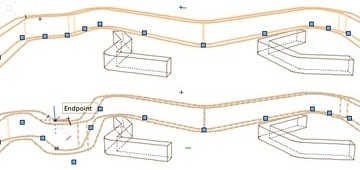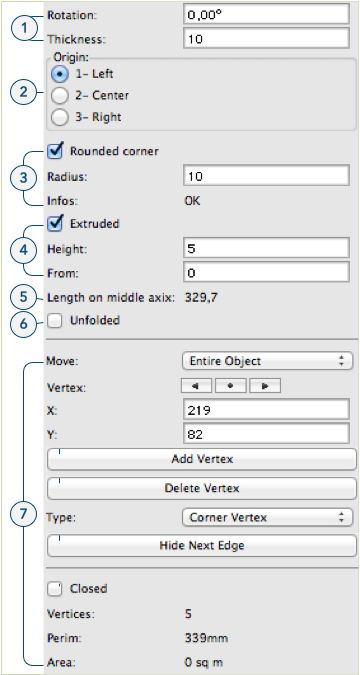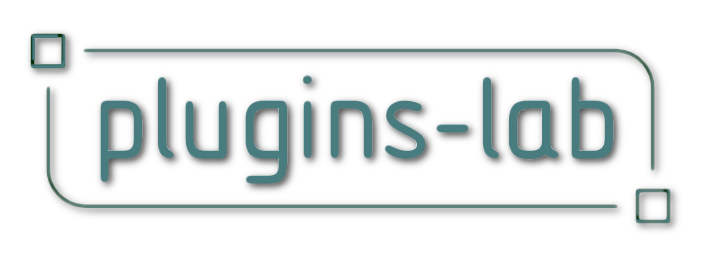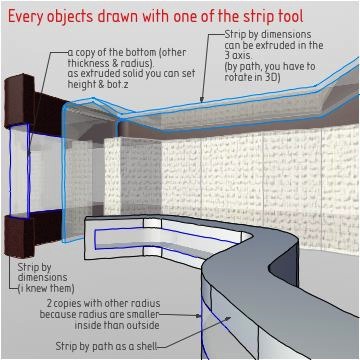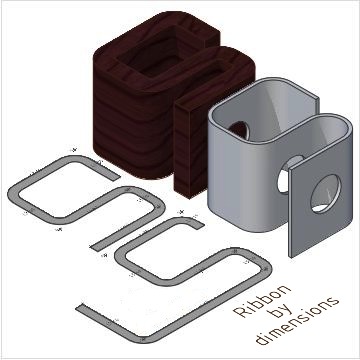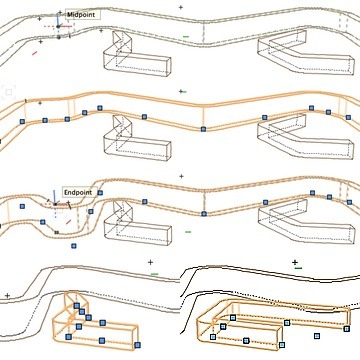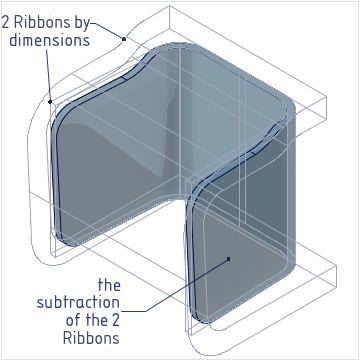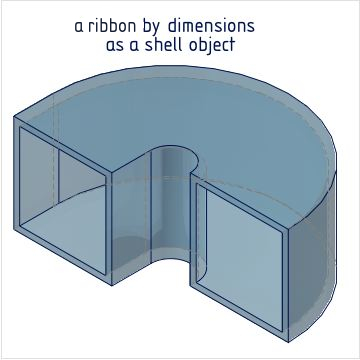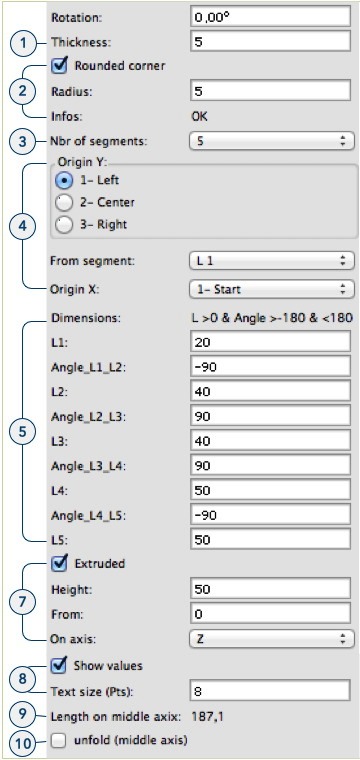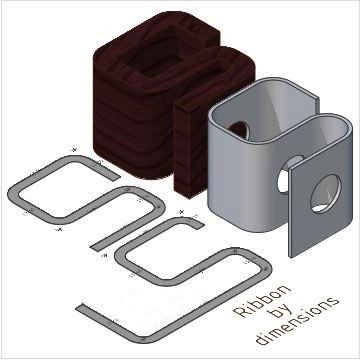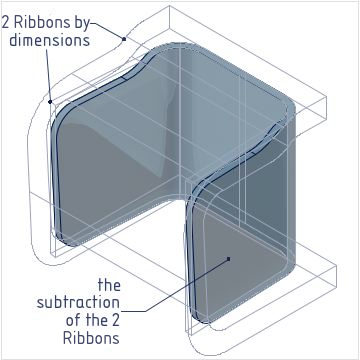Ribbon by path:
The Ribbon by path can have up to 40 segments (if you draw more segments they will be discarded).
Some parameters are hidden when they are not used.
- Thickness: The thickness of the ribbon.
- Origin: Such as double-line or a wall, left, centered or right from the line you draw (the path).
- Radius: Here you set if you want radius corners and their dimensions (inner radius). If the required radius is not possible (segments too small, angle too acute ) the radius will be set to the maximum and the opposite one will be altered according to this new dimension (-+ thickness). The infos field will show which vertex has a smaller radius.If all radiuses have the right dimension,OK will be shown there.
- Extruded: When you set to extruded, you will be able to set the height of the extrude and the distance of the start of the extrude (bot Z).
- Lenght on middle axis: This will tell you the material quantities required to build it.
- Unfold: This will draw (and only draw, so make a duplicate if you need both) the unfolded strip. The height of this is the height of the extrude even if not set.
- polygon edit panel: The normal polygon/polyline edit field to edit the path by coordinate.
